- Bernard Preston homepage
- Bread
- Storing Wheat Berries
Storing wheat berries
Storing wheat berries safely so the weevils will not attack the grain is important for the home baker.
You simply cannot purchase 100% whole meal because the fatty acids go rancid within three days of being ground; unless you have a dedicated miller around the corner. So you have to grind the grain yourself if you are serious about the nutrition and flavour of your bread.
Buy your wheat directly from the farmer if you are able. That will probably be around October and November in South Africa; then storing wheat berries for a whole year becomes the issue.
This page was last updated on 9th November, 2024. I have just placed an order for 200kg.
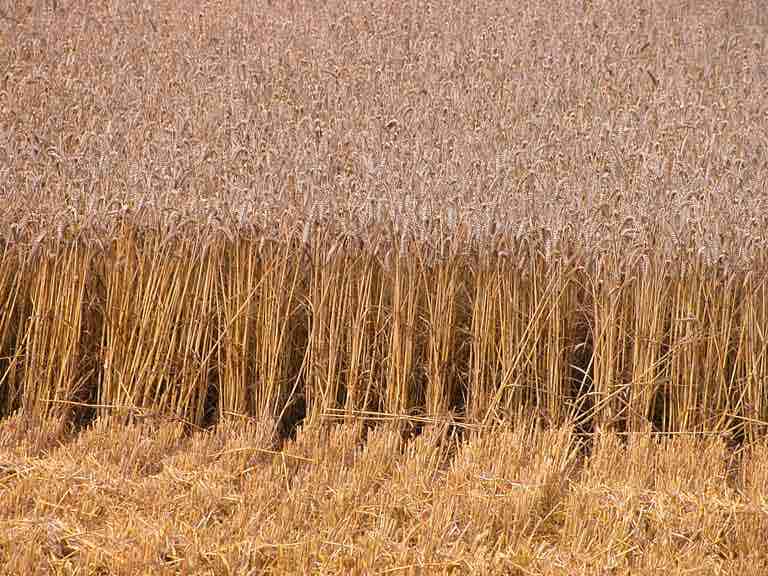
If you bake daily you'll need about 200kg; four of these bags.
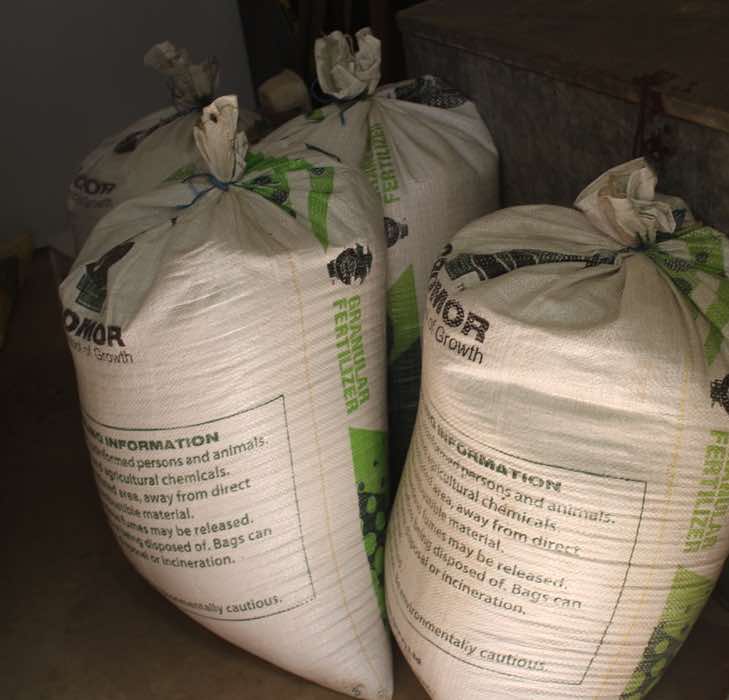
Dehulling
The ancient grains like spelt, emmer and einkorn all have to be dehulled before they can be used. They have certain advantages; they need less nitrogenous fertilisers and are more competitive against weeds. They are lower in protein and are less likely to affect people sensitive to gluten.
The unhulled grain can be used for animal feed and by brewers but generally it has to be removed with machinery involving a cost[3].
Wheat on the other hand is considered hulless, a very significant advantage and is probably the chief reason that the cultivation of wheat has surpassed the other ancient grains.
Actually wheat does have a hull but it readily falls from the grain and can be more easily removed.
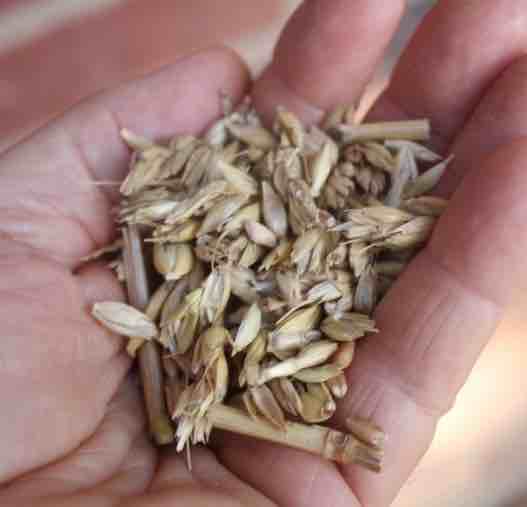
It takes a little time but the wheat grain with hulls can fairly readily be picked out by hand during the sieving process. In our case we feed them to the fowls.
One disadvantage of hulled grains is that they are more prone to diseases and the oils are more likely to go rancid. In short storing wheat berries should be done as soon as possible.
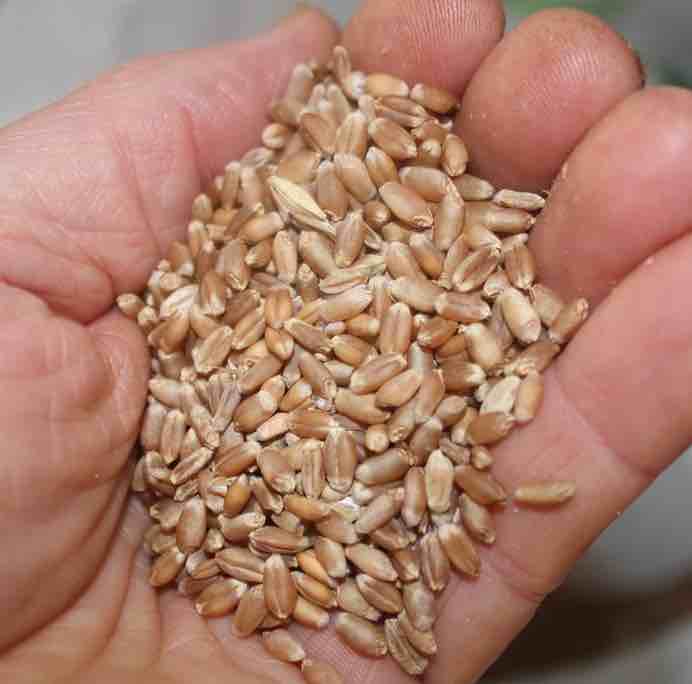
In the photo below you can see the wheat berries in the background and on the left our 100 percent grain that I have just ground; the counterfeit wholemeal purporting to be the real deal is on the right.
As you can see for yourself, it's anything but wholemeal flour; the big fat lie of milling.
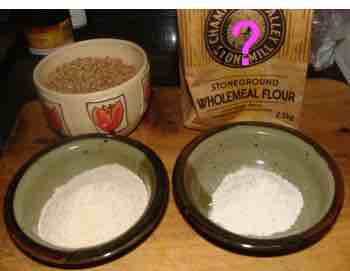
Just like you would not build a beautiful home on a piece of ground right next to a highway or in a broken down neighbourhood, so you should not bake your bread with inferior ingredients; that probably means milling your own wheat berries.
And of course, you must also then store the grain safely from weevils and moisture before it goes into the grinder.
I learned this lesson the hard way. To my horror I once opened my sack of wheat berries only to find that it was infested with weevils.
The whole 50kg went to the chickens; they of course were delighted with both the grain and the insects.
There are three great enemies; weevils, air and moisture that may allow a fungus called Aspergillus to flourish. It produces a very nasty substance called an aflatoxin that will cause tumours in our livers.
Warm and humid conditions are to be avoided at all costs.
It is best to mill only as much flour as you need to bake with. It is said you can store it for three days, a week in the fridge and a month when frozen but it will have deteriorated.
I need 600 grams for a loaf of bread so that is how much I mill; no ground flour is stored in our home.
Storing wheat berries
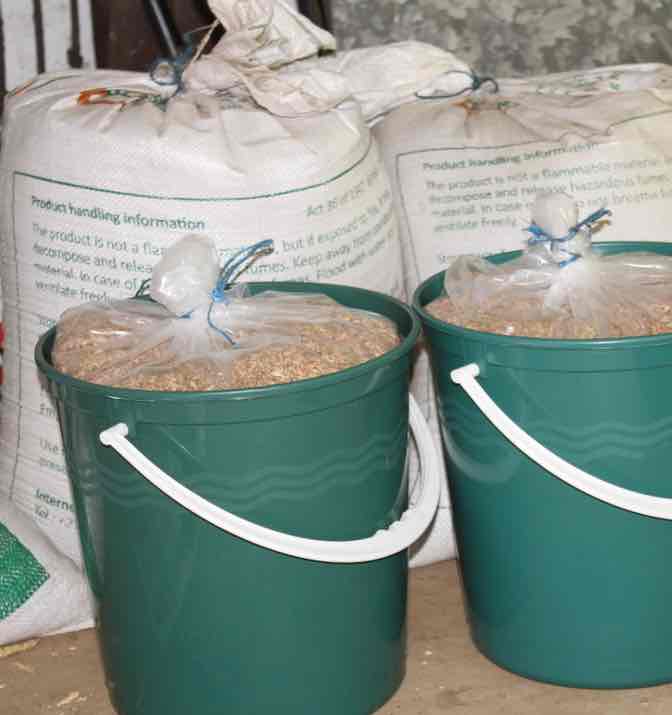
Storing wheat berries without being fumigated using dangerous chemicals like Phostoxin is important to us; residues remain in the grain.
- A deep freeze on its coldest setting.
- Large, heavy duty food-grade plastic bags.
- 20 or 25 litre buckets with a sealable lid; the larger are very heavy.
Modus operandi
- If your wheat is dirty you may want to filter it through a coarse wire gauze to remove the chaff and dust from the fields.
- Place a large plastic bag into a bucket with an airtight lid.
- Scoop the wheat berries into the plastic bag, filling the bucket; remove as much air as possible, fold the neck over and tie it tightly with twine.
- Place the whole bucket into the freezer for at least two weeks; no harm in going longer.
- We used to place just the bags in the freezer but after being chilled they tend to tear.
Tips
Your really want the plastic bags to fill the buckets, so experiment with how much wheat you want to put into them.
If you have a large enough freezer then put the whole bucket in.
An alternative is to use some smaller bags; the idea is to fill the bucket to the brim to keep as much air out as possible.
Do this on a day when the humidity is very low; moisture and air are the two great enemies.
Store the buckets after freezing in a cool, dry place away from sunlight.
Freezing the wheat berries for at least two weeks will sterilise them and kill the weevils and their eggs.
Storing them first in plastic bags and then in buckets acts as a double insulation to prevent a secondary infection by bugs and mice after freezing.
It also keeps the moisture out. If the wheat berries look the slightest bit mouldy, discard them. Do not be tempted to use them; aflatoxin is one of the most potent causes of malignant liver disease.
Newsletter
Our newsletter is entitled "create a cyan zone" at your home, preserving both yourself and Mother Earth for future generations; and the family too, of course. We promise not to spam you with daily emails promoting various products. You may get an occasional nudge to buy one of my books.
Here are the back issues.
- Lifestyle and ideal body weight
- What are ultra-processed foods?
- Investing in long-term health
- Diseases from plastic exposure
- Intensive lifestyle management for obesity has limited value
- A world largely devoid of Parkinson's Disease
- The impact of friendly bacteria in the tum on the prevention of cancer
- There's a hole in the bucket
- Everyone is talking about weight loss drugs
- Pull the sweet tooth
- If you suffer from heartburn plant a susu
- Refined maize meal and stunting
- Should agriculture and industry get priority for water and electricity?
- Nature is calling
- Mill your own flour
- Bake your own sourdough bread
- Microplastics from our water
- Alternative types of water storage
- Wear your clothes out
- Comfort foods
- Create a bee-friendly environment
- Go to bed slightly hungry
- Keep bees
- Blue zone folk are religious
- Reduce plastic waste
- Family is important
- What can go in compost?
- Grow broad beans for longevity
- Harvest and store sunshine
- Blue zone exercise
- Harvest and store your rainwater
- Create a cyan zone at your home
Sitophilus granarius, the grain weevil, knows a good thing when he sees it; wheat berries are good food for us but also for chickens, cattle and the bugs.
She bores her way into the grain of wheat, eating mainly the germ where most of the goodies are found; and then lays an egg inside the kernel.
The egg hatches and the larva grows inside the grain of wheat, feeding on the highly nutritious food, eventually emerging as an adult weevil.
They will then mate and lay more eggs in the wheat berries.
The weevil's eggs may be laid in the wheat in the field but usually the inoculation is in the granary itself.
It is not called granary weevil for nothing. Knowing about storing wheat berries is important.
Wheat mills
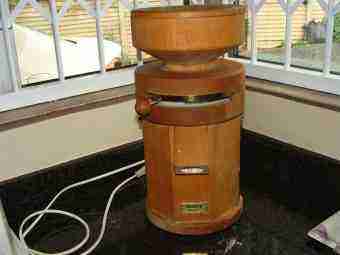
I would not buy a wheat mill on-line unless you have previously seen it and tested how finely it can grind the flour; how noisy it is, the heat produced and how fast it works are all criteria to think about.
Stone ground is best.
Our Hawo has been fantastic but it is very expensive. I have heard good reports about the Mockmill and the KoMo Mio.
You can purchase your wheat berries directly from the farmer. Accept that there will be a bit of chaff and dust; they will not kill.
Storing wheat berries as soon as they arrive is important. Purchase the plastic bags and buckets ahead of time.
This is the only way to have your own freshly-ground 100 percent wholemeal for your bread.
Background
Wheat is a grain that is eagerly sought after not only by humans, but many animals, birds and insects; it is one of nature's most nutritious foods[2].
There are three parts to storing wheat berries.
- The endosperm which is used to make cake flour.
- The bran or covering that keeps air out of the grain so it can be stored for years; it contains the very important lignans that help prevent malignant breast disease. Most of the riboflavin, vitamin B2 is found in the bran.
- The germ which is where most of the essential fatty acids, vitamins and minerals are stored.
Once milled, air causes the fatty acids to oxidise. After refining most of the goodness has been removed; millers sell it at great profit for animal feed. We are left with the empty calories that make us obese.
Wheat berries are particularly rich in a vitamin-like substance called betaine that helps prevent inflammation in the body.
The cost of your flour
The real value of milling your own flour is that it is absolutely fresh; and all of these components are present in the normal ratio found in wheat berries.
The mark up from flour to the baker is in theory roughly four times; in South Africa from R4 to R16 per kilogramme (2019).
I say in theory as in fact you are not comparing apples with apples. That which you purchase at the supermarket has had much of the nutrient removed, even if it is called wholemeal. You still then have to go out and purchase vitamin E capsules, calcium tablets and a host of other substances.
Our bread machine uses 600g to make a loaf. If you bake daily that is about 3kg per week, or 150kg per year.
From the farmer, 150kg will cost you R600; about $40.
From the supermarket, the flour will cost you R2400.
Milling and storing your own wheat berries means a saving of at least R1800, not including all the extra costs of buying your multivitamin and mineral supplements; and the bran where the lignans, some protein and the riboflavin are found.
In short your mill will be paid off in no more than three years.
If you take it to the next simple step of making sourdough bread, which is very expensive to purchase, your mill be paid off in less than a year. More important, your well-being is so enhanced by milling and storing wheat berries; and the taste of your own fresh bread is sublime.
The real cost of storing wheat berries is measured not in rands and cents, or dollars, but being far more hale and hearty. It is the first step in saying goodbye to constipation for a start; that is from the fibre. The next is to start enjoying stewed prunes for breakfast every day; research shows that they are more effective than the best medicine prescribed by doctors, at a fraction of the price.
- How to prevent grain weevils [1] is an interesting page.
Ferulic acid
The phenolic phytochemical called ferulic acid incidentally is now thought to be the active ingredient in the bran that is so beneficial to our wellbeing. Even refined so-called "wholemeal" grain has far less. True 100 percent wholemeal flour is one of the essential foods for the brain. Storing wheat berries might just mean saving your marbles from decay.
"Over the past five years (2016-2020), South Africa imported an average of 1.8 million tonnes of wheat per calendar year, roughly half the annual wheat consumption needs."
- Wandile Sihlobo, chief economist of Agbiz (2022).
The acid test
It is always a bit of an anxious moment for me anyway when you open the first bucket. Have you stored your wheat berries successfully, or did the weevils get stuck in anyway?
In this pandemic year I find it gratifying that we do not have to go out and shop daily, and have the very best bread in the world; I am not exaggerating, both in taste and nutrients, for only R5 per loaf weighing over a kilogram. That is less than half a dollar. Storing wheat berries is worth every cent.
Last year we lost half a bag that went to feed the chickens; so far this season the score is Bernard Preston 1, Granary Weevils 0.
This is the biggest step you can make when desiring to change to real from fake bread; that which has no taste, is fattening and gives you a bellyache.
This is our standard low GI loaf.
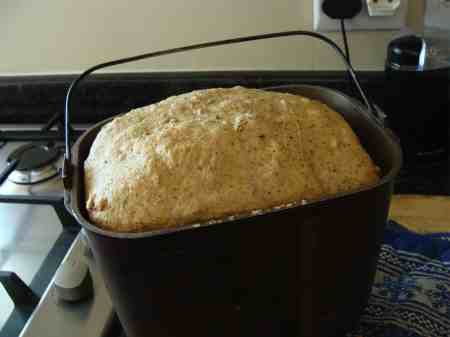
There is plenty of research showing that whole grains lower cholesterol, but since 100% wholemeal bread is not readily available there are no reliable statistics available. You can be sure you could reduce and probably stop statins.
Did you know that statins increase the risk of you getting type-2 diabetes. I'd rather have a real slice, and eat it. Yeasted beer bread is one delicious and simple way to do it.
When there are carbs galore in midsummer from corn, potatoes and beans, then we recommend reducing your bread consumption. By storing your wheat berries correctly they will keep until the glut is over.
A sound and blameless body is a religious connotation; there is a definitely a spiritual component to caring for ourselves. There is a place for shunning; not of other Christians but of those tempting dishes that masquerade as food.
Stunting of children is one of the consequences of refining of grains; extraction of the bran and germ oils means severe loss of tocopherols (vitamin E) and carotenoids (retinol)[4] which are essential for the growing child.
A deficiency of carotenes, the precursors of vitamin A is the cause of blindness and death of over a million children every year, particularly in Africa and Asia[6].
- How to prevent grain weevils. Web: https://www.thekitchn.com/how-to-prevent-get-rid-of-grai-140955
- Preserve the harvest: storing wheat. https://extension.usu.edu/preserve-the-harvest/research/storing-wheat
- Dehulling Ancient Grains
- Studies on the nutraceuticals composition of wheat derived oils wheat bran oil and wheat germ oil
- Carotenoid Content in Organically Produced Wheat
- Bioactive phytochemicals in wheat
When browsing use right click and "Open Link in New Tab" or you may get a bad gateway signal.
Did you find this page interesting? How about forwarding it to a friendly book or food junkie? Better still, a social media tick would help.
- Bernard Preston homepage
- Bread
- Storing Wheat Berries
Address:
56 Groenekloof Rd,
Hilton, KZN
South Africa
Website:
https://www.bernard-preston.com